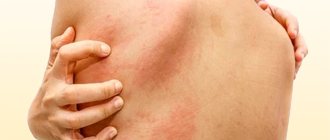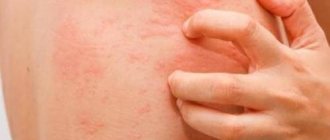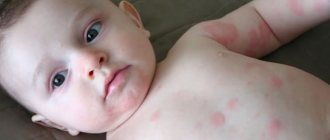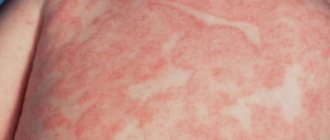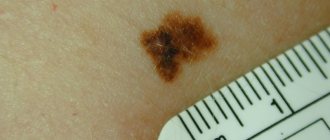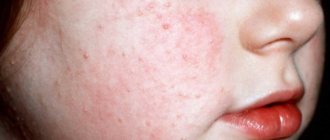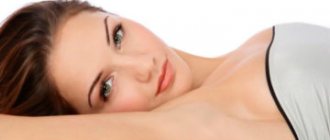Solar urticaria, also popularly known as sun allergy, does not appear to be dangerous at first glance. But for 3% of the world's population, this phrase may indeed seem scary.
Many millennia have already passed since the first man appeared on Earth. All this time, depending on climatic conditions, people are exposed to a certain amount of sunlight. As is known, these rays can have a beneficial effect on the human body. This is manifested in their ability to supply us with vitamin D, which is vital as it helps the body develop and grow.
But there are also disadvantages. For example, prolonged exposure to the sun can cause depression and mild mental disorders. Moreover, if someone decides to overdo it with sunbathing, painful burns and wounds may appear. And it’s not even worth mentioning about the harm of radiation.
The average inhabitant of the planet can stay in the sun for quite a long time. But there are people for whom a few minutes, and sometimes even seconds, in the sun can turn into a nightmare. Such people have a diagnosis of solar urticaria in their arsenal. The most interesting thing is that the sun cannot be an allergen and cause unexpected reactions in the body. But it can become a catalyst that triggers a complex system of interaction between other allergens present in the human body.
Development mechanism
Urticaria is a skin disease characterized by a severe rash on the upper layer of the epidermis and intense itching. The disease occurs in children and adults of both sexes and can be diagnosed at any age. It is not contagious and cannot be transmitted from one patient to another.
Solar urticaria is a reaction of the epidermis to the action of ultraviolet rays. How does such a disease occur? Experts believe that there are two mechanisms for the development of solar urticaria.
Mechanism:
- The impact of ultraviolet rays on types of leukocytes - basophils - leads to a sharp increase in their number. As a result, an allergic reaction develops on the skin.
- In the absence of an allergen, intensive production of protoporphyrin compounds occurs, which increase the sensitivity of the skin. This disease is hereditary.
Solar urticaria is often called pseudoallergic. The fact is that in the presence of a reaction on the epidermis, no allergens are detected in the blood.
There are acute and chronic stages of solar disease. In the first case, the disease manifests itself sharply and intensely, and may disappear after several years if all prescriptions are followed. The chronic type is characterized by a severe course, frequent exacerbations, and is difficult to treat.
Features of the disease
Solar urticaria is also called pseudoallergy, because despite the abundance of symptoms inherent in an allergic reaction, antibodies are not produced in the blood of patients of any age. If photodermatitis is hereditary, it will appear in childhood.
In other cases, all people are equally susceptible to it, since it is not known what exactly provokes the disease, although it is diagnosed much more often in females. Patients whose skin quickly burns or does not tan are most susceptible to it.
The concept and symptoms of solar urticaria are discussed in this video:
Rash symptoms
Solar urticaria presents similarly to other types.
Signs:
- Extensive rashes on the skin, blisters can be single or merge into one spot,
- Having severe itching
- Feeling unwell, dizzy,
- Dry skin,
- Strengthening the skin pattern,
- Labored breathing,
- Dehydration, chills, weakness, elevated body temperature.
These are the main symptoms that occur with this type of urticaria. In complex cases, severe swelling of the skin and mucous membranes and the appearance of Quincke's edema may develop. This condition poses a danger to humans and requires emergency care.
If exposure to the sun was not long, then the unpleasant symptoms go away on their own after some time.
Frequent exposure to the sun on exposed areas of the body develops resistance to ultraviolet radiation. Symptoms appear in closed areas of the skin.
You can see what urticaria from sun exposure looks like in the photo below.
Symptoms
If a person prone to photodermatitis spends some time in the sun (from 10 to 90 minutes), then this threatens the appearance of a number of unpleasant signs:
- extensive scattering of red spots;
- unbearable itching;
- blisters;
- chills;
- nausea;
- weakness.
Wherein:
- The severity of symptoms depends on how long the sun shines on the skin. If it is 2 hours or more, then nausea, vomiting and even fainting are very likely, and the blisters will be larger.
- With short (up to 30 minutes) irradiation, the symptoms quickly subside, the rash is small in size and the itching is not as pronounced.
You can try to determine what caused photodermatitis. For example, if cosmetic products have had an effect, then the areas of redness have clear boundaries. If the factor is internal disease or uncontrolled medication use, then the circles of redness are symmetrical.
Signs of solar urticaria do not always appear immediately after contact with the sun. It also happens that the first symptoms appear only after 1-2 days. They progress differently for each person. For some, it is enough to go into the shade and wait a while for the manifestations of photodermatosis to disappear, while for others, full-fledged treatment is required.
Diagnostic features and causes
Diagnosing the disease is quite simple based on external signs. However, it must be differentiated from a hereditary disease - erythropoietic protoporphyria. Therefore, various blood tests are carried out to determine the amount of protoporphyrin in red blood cells.
Blood, urine, and hormonal tests are used to make an accurate diagnosis. If necessary, examinations are carried out using ultrasound, MRI, CT to identify abnormalities in the functioning of internal organs.
Causes of urticaria
What can trigger the solar form of urticaria? There are some factors that can influence the development of the disease.
FACTORS:
- Individual characteristics of the body, ultraviolet intolerance.
- The use of cosmetics that in the sun provoke a negative reaction on the skin.
- Heredity is considered one of the factors causing the disease.
- Consumption of medications and allergenic products.
- Chronic diseases of internal organs - stomach, intestines, thyroid gland, liver.
Prolonged exposure to the sun leads to a sharp onset of symptoms. If a person goes into the shade, the symptoms will subside, but the first time they appear in the sun, the aggravation will intensify.
It is impossible to determine the exact cause of hives; if a reaction occurs on the skin, a visit to the doctor is required.
How to treat photodermatitis in children?
Sun urticaria never chooses its victim based on age or gender. This is alarming. Nowadays, there is a sharp increase in the number of children who suffer from sun allergies. When a disease appears in children, the question of how to treat it becomes very acute. When a child, for example, gets a food allergy, the symptoms are caused by the body's reaction to a certain product. But with photodermatitis everything is much more complicated.
In addition to the sun, this disease can cause changes in the baby’s immune system. Quite strange, but such an allergy, in some cases, is a strange reaction to sweet and starchy foods.
A child is treated, of course, differently than an adult. This is due to the fact that he is still small, and excessive doses of medications can only do harm. The first thing you need to do is keep your child's exposure to the sun to a minimum. It is best if the baby is not shown on the street between 11 a.m. and 5 p.m. But if there is an urgent need to leave the house, then the baby must be smeared with protective cream. Upon returning home, the child should be washed with cool water. True, if you have herbal infusions at home, it is better to use them. What to do if the rash does make itself felt? In such a situation, parents will be forced to treat the child with medications. Ointments such as Fenistil, Elidel and others are suitable for this purpose.
And now a little about cases that occur in a complicated form. First, parents should expect the best and not panic. After visiting a dermatologist, they will receive a prescription sheet containing antihistamine medications. They are prescribed taking into account individual indicators, since each drug can treat in its own way. At the initial stage, most likely it will be Tavegil or Ketotifen. If they do not give any results, you will have to use Erius or Zyrtec. In rare cases, doctors may use hormone therapy.
Treatment with medications
How to treat solar type urticaria? Treatment is selected by an experienced specialist based on the diagnosis. For mild forms of urticaria, external medications and traditional methods are sufficient. In difficult cases, oral medications are also used.
For solar nettle fever, medications help quickly cope with unpleasant symptoms and reduce the manifestation of the disease.
Medicines:
- External agents - Panthenol, Fenistil, Bepanten . Helps reduce skin irritation. If there are no results, medications containing corticosteroids are prescribed (used only with permission).
- Antihistamines - Tavegil, Zyrtec, Claritin, Suprastin. They reduce the production of histamine in the blood, relieve inflammation, itching, redness, and help get rid of swelling.
- Vitamin complexes. Necessary to support the immune system, increase the body's resistance to negative factors.
- Sorbents – Polysorb, Activated carbon. They will help rid the body of toxic substances faster and cope with the disease.
Treatment with medications is permitted with the permission of a specialist. It is not recommended to independently select a medicine for solar urticaria due to the possible development of complications of the disease.
Complications
If there is no result of drug treatment for a long time, and relapses of photodermatitis begin to appear frequently, then this threatens the appearance of chronic solar eczema. Such a scenario will lead to the appearance of pigmentation and thickening of the epidermis.
Since the disease is accompanied by severe itching, this inevitably leads to scratching of the skin surface. After this, it is not always possible to treat it, but infection can easily penetrate through the damage, which will lead to the appearance of purulent inflammation.
Folk remedies to help
For mild urticaria from sun exposure, it is permissible to use a variety of folk remedies.
Ethnoscience:
- One hundred grams of marjoram is poured with two liters of boiling water. Insist for several hours. The finished infusion is added to medicinal baths.
- Brew good black tea. The cooled solution is wiped over the skin after twenty minutes. Repeat until relief occurs.
- Brew burdock roots with boiling water. The finished medicine is used for compresses.
- Fresh cucumber is ground into a paste. The mixture is applied to the inflamed areas.
- Rolled oatmeal flakes are added to the bath and taken to reduce irritation on the skin.
Traditional medicine is acceptable in treatment, but caution will not hurt.
In some cases, physiotherapeutic procedures - plasmapheresis, phototherapy - can help cope with solar nettle fever.
Regardless of how you are treated, treatment of solar urticaria requires proper nutrition. You should avoid allergenic foods - chocolate, nuts, citrus fruits, fried and smoked foods, marinades. The diet includes fermented milk products, hypoallergenic vegetables and fruits. The correct drinking regime – clean water, green tea in sufficient quantities – has a beneficial effect on the body’s condition.
Prevention of solar urticaria
Solar urticaria will not bother a person if certain preventive measures are taken.
Measures:
- Stay in the sun less
- Avoid visiting the solarium
- It is better to take walks during a period of time when the sun's rays have minimal activity,
- Drink enough water per day
- Pay special attention to clothing, choose natural, high-quality fabrics in light shades,
- Stick to proper nutrition, pay more attention to fermented milk products,
- Before going outside, use special protective equipment,
- Select cosmetics carefully.
Following simple rules will help avoid relapses of urticaria.
Solar urticaria is an unpleasant disease that can cause a lot of trouble for the patient. With the right lifestyle, it is possible to achieve remission of the disease and avoid exacerbations.
Types of disease
There are two forms of urticaria: Immune (allergic) urticaria - develops with the participation of the immune system, accompanied by the active formation of antibodies and the release of histamine. Combined with pathology of the digestive system. Without pathology of the digestive organs.
Non-immune (pseudo-allergic) urticaria occurs without the participation of the immune system and is caused by: previously suffered severe intoxication of the body (malaria, dysentery, mushroom poisoning, etc.); hypersensitivity to drugs; infection with parasitic worms (ascariasis, giardiasis).
When compiling an anamnesis, it was found that in 70% of people the development of the disease was preceded by exudative diathesis. Pathological diseases of the digestive system (intestinal dysbiosis, infection with parasitic organisms) are typical for 94% of those studied.
40% of patients had permanent foci of infection in the body (dental caries, chronic inflammation of the tonsils, etc.). Analyzing the above information, we can conclude that the disease urticaria develops in people predisposed to allergic reactions in the presence of disorders in the digestive system.
Allergic urticaria
This type of urticaria can be caused by various allergens: Food allergens: eggs, sugar, citrus fruits, potatoes, chocolate, etc. Often the culprits of the disease are several products at once, especially with a long-term chronic course of the disease.
Medicinal allergens: antibiotics, B vitamins. Epidermal allergens: dandruff, pet hair. The acute period of allergenic urticaria lasts several hours until contact with allergens stops.
With food allergies, periods of exacerbation alternate with periods of remission until allergenic foods are completely eliminated from the diet.
Pseudo-allergic
Pseudoallergic urticaria is a disease that develops without the participation of the human immune system. Accordingly, no increase in antibody levels is observed during this process.
Pseudoallergic urticaria is manifested by the action of external and internal factors (temperature, physical activity, bacterial infection), but the formation of an antigen-antibody complex and the production of immunoglobulins JE does not occur.
Cold
Cold urticaria most often develops under the influence of low ambient temperatures. On cooled areas of the body (most often on the face and hands), blisters, a burning sensation, and swelling appear. The allergic reaction reaches its maximum manifestation during the period of warming up of the victim.
In most cases, cold allergy symptoms go away within 50-60 minutes, sometimes lasting up to 5-7 days. Cold drinks and ice cream can also trigger cold urticaria.
Cholinergic urticaria
Cholinergic urticaria develops under the influence of elevated body temperature. An increase in temperature can be caused by physical activity, drinking hot drinks, or taking water procedures.
The allergic reaction is characterized by the appearance of itchy pink blisters all over the body. The true causes of the disease have not been precisely established, but those suffering from cholinergic urticaria are often diagnosed with: pathologies of the digestive tract; helminth infections; dysfunction of the thyroid gland.
Nervous
Nervous urticaria is another form of pseudoallergic urticaria. The triggering factors are nervous tension, excitement, stress, and fear.
There are also solar urticaria, mechanical urticaria, and aquaurticaria, which develop respectively under the influence of sunlight, mechanical damage and water.

